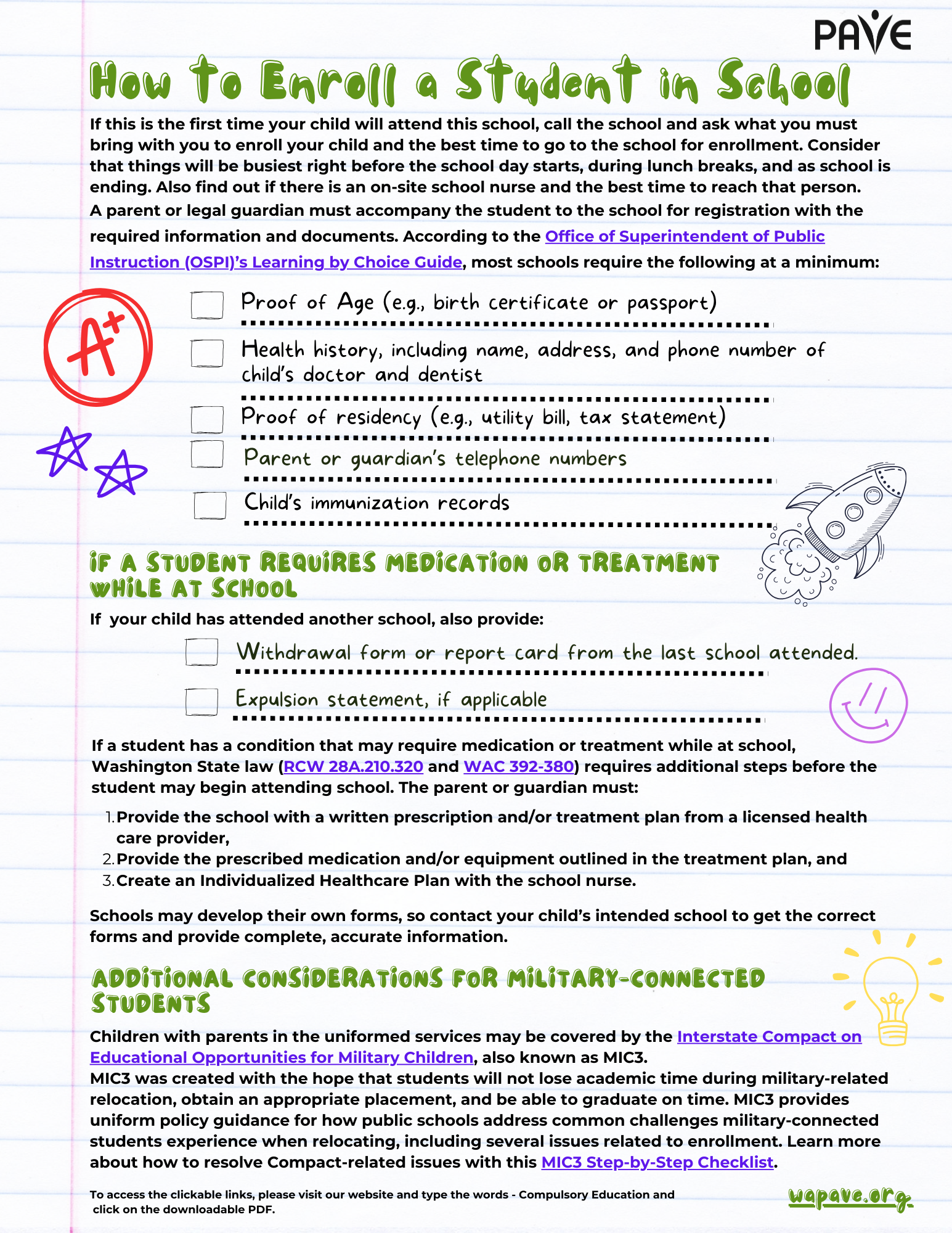Overview:
- Planning for your child’s future will involve different tasks at different stages in your child’s life. This article covers what you will need from age 13 through adulthood. Part 1 covers the years from ages Birth through 12.
- This article has information on:
- Legal and informative documents parents may want to create or update at key stages in their child’s life (will, powers of attorney, letter of intent)
- Financial planning, including options which do not affect your child’s benefits.
- Supporting and protecting your minor child after your death or when you are unable to care for them.
- There are many legal and financial terms in this document. This glossary of definitions is helpful.
Full Article
Thinking about the future when you will no longer be available to help your child because of death or a condition where you cannot participate in their care can be emotionally difficult. On top of that, this planning process is full of important decisions with significant impacts on your child’s future. To prevent being overwhelmed, it may help to review the entire article, and then tackle the tasks and steps needed to create a plan.
When your child is between age 12 and age 18
Review all the basic legal and financial arrangements you have already made. What needs to be changed? Are the guardians, financial managers, powers of attorney agents and trustees still ready and able to take on those responsibilities? If not, make an appointment with your attorney to change the terms of, or create your will, powers of attorney, and Special Needs Trust. You may also wish to begin an ABLE account for your child’s benefit. Information about these arrangements is available in PAVE’s article, What Will Happen When We’re Gone? Planning for the Future of Your Child with Disabilities PART 1 Ages Birth to 12.
Does your child aged 13 or older have a Health Care Transition Plan?
Does your child have a person-centered plan that includes their own future desires and the people they want to be in their lives? If so, it’s a good idea to consult the plan when considering your legal and financial documents, and your Letter of Intent.
If your child does not yet have a person-centered plan (PCP), you can suggest it and encourage and support them to create one.
A Person-Centered Plan is an individual’s plan for their future-their wishes about what they want to do with their life. What current and future living arrangement do they want? Do they want to work, and if so in what field? Do they want more education or training after high school? What about personal relationships—dating, partnering/marrying, general social life? A PCP explores all areas of a person’s life. It’s flexible and updateable. If an individual with disabilities needs some assistance to develop the plan, they can select the people to give them that help and support.
PAVE has resources about the process of creating a PCP:
- What is Person Centered Planning? (article and Video)
- Mapping Your Future with Person Centered Planning
Other typical future planning in this time period:
When your child is an Adult (age 18 in Washington State)
Legal documents to create or update:
A will. Your child is no longer a minor, so you do not need to identify a guardian for them. If your child receives government benefits (SSI/SSDI, Medicaid) you will want to make sure your child’s inheritance does not go directly to them when you die, but is distributed to a Special Needs Trust or ABLE account.
Power of Attorney: Because your child is now a legal adult, you cannot make decisions for them any longer and you will not need a Power of Attorney to make decisions on their behalf.
Letter of Intent: Create it or update it to support your adult child’s life plans as described in their person-centered plan. It’s not a legal document, but you can keep copies of it with your will to show that your wishes support your child’s ability to make decisions about their life (depending on their level of disability).
Depending on your child’s disability, they may be able to work, live independently and manage their own finances and health care, possibly with various levels of support. On the other hand, most parents want to protect their child from making decisions on their finances, housing, employment, etc., which may not turn out well because of the child’s inexperience or level of disability.
There are several legal options for an adult child to be provided support in decisions about their lives and in their day-to-day living. Some are very restrictive of a person’s rights to make decisions about where they will live, whether they have a say in how their money is spent, employment, education and even their own health care.
The least restrictive option is Supported Decision-Making (SDM). It’s a legal agreement to make sure an adult with disabilities has trusted helpers watching out for their well-being. An SDM agreement does not remove the adult individual’s rights but creates a way for the individual and their supporters to make choices together. This is a fairly new legal option as Washington added this option to the Uniform Guardianship, Conservatorship and Other Protective Arrangements Act in 2020. There may be a small fee to have the signatures on the document notarized. It does not have to be filed with the court, but copies should be provided to health care providers and the originals should be kept safely.
If your adult child has a person-centered plan, it can help with identifying supporters in the SDM agreement—and vice versa!
PAVE has a resource about this option, which includes links to other resources and supports to help parents and adult children understand how this option works: Supported Decision Making is an Option for Adults with Disabilities. The list of options below is from that article.
Another option is Conservatorship of an Adult, in which a court-appointed person makes property and/or financial decisions for the adult with disabilities. Like guardianship below, the petition may be denied if less restrictive options are not tried first.
Lastly, there is Guardianship of an Adult, in which a court-appointed person makes decisions for the adult with disabilities. Guardianship may be combined with Conservatorship. Guardianship is the most restrictive option and may not be granted unless there is evidence that less restrictive alternatives are unworkable.
Washington Law Help has more information on Guardianship of an Adult and other protective arrangements.
Informed Consent: This is a limited option for supporting medical decisions when a healthcare provider determines that an individual is unable to properly understand their condition or make fully informed decisions (RCW 7.70.065). Note that an individual with a Supported Decision Making (SDM) agreement may be able to demonstrate they can make their own decisions about healthcare with the help of their supporter.
Power of Attorney: An individual (in this case, your adult child) can sign a legal document to give someone else power to make decisions on their behalf under limited or general circumstances. A Mental Health Advance Directive, to be invoked if someone with a mental illness loses capacity, is an example of a limited Power of Attorney document that an individual might choose to sign. Washington Law Help provides a Q and A on Powers of Attorney.
Representative Payee: The Social Security Administration (SSA) may determine that an individual receiving benefits needs a payee to manage their income. If an individual disagrees with the administration’s decision to appoint a payee, they must present evidence of their ability to manage their money. Disability Rights Washington (DRW) provides information about how to change, remove or report a representative payee.
Protective Arrangement: A court-appointed person makes decisions for the person with disabilities related to specific and limited conditions, such as specific medical decisions or contact with a specific individual who might cause harm. The Vulnerable Adult Protection Act provides protection to adults in Washington State who meet one or more of these criteria:
- 60 or older and functionally, mentally, or physically unable to care for themselves
- Have a court-appointed guardian
- Have a developmental disability
- Live in a nursing, adult family, or boarding home or other facility
- Served by home health, hospice, or home care agencies
- Receive services from an individual care provider or personal aide
NOTE: Anyone who suspects physical harm, someone being held against their will, sexual abuse, neglect, financial exploitation, or abandonment can call Adult Protective Services at 1-877-734-6377 or Report Online.
Adult dependent children and family members of military may continue to receive military benefits, including access to installation facilities (like medical services, recreational programs, and family supports) once they’ve aged out of dependent status under Secondary Dependency. To qualify, the individual must be:
- A qualifying family member, including an adult child with a disability
- Unmarried
- Unable to support themselves due to a mental or physical disability that began before age 21, or age 23 if they are a full-time student
- Receive more than 50% of their living expenses or financial support from the servicemember
Establishing secondary dependency includes an application process through the servicemember’s branch of service and a disability determination. For more information, contact the Exceptional Family Member Program (EFMP) closest to you or register for the STOMP (Specialized Training of Military Parents) Workshop, “Pathways to Military Medical and Medicaid Benefits for Exceptional Family Members”.
For more information on wills, powers of attorney, Special Needs Trusts and ABLE accounts, see What Will Happen When We’re Gone? Planning for the Future for Your Child with Disabilities Part 1: Ages Birth to 12.
Additional Resources


